 Mysteries
Mysteries  Mysteries
Mysteries  History
History 10 Surprising Stories About the Texas Rangers
 Humans
Humans 10 Philosophers Who Were Driven Mad by Their Own Theories
 Miscellaneous
Miscellaneous 10 Video-Game-Worthy Weapons and Armors from History
 Weird Stuff
Weird Stuff 10 Psychics Who Accurately Predicted Wartime Events
 The Arts
The Arts 10 Pieces of Art Inspired by a Broken Heart
 Health
Health 10 Science Fiction-Sounding New Medical Treatments
 History
History 10 Surprising Facts About the Father of Submarine Warfare
 Space
Space Ten Astonishing New Insights into Alien Worlds
 Weird Stuff
Weird Stuff 10 Bizarre Summer Solstice Rituals Still Practiced Today
 Mysteries
Mysteries Top 10 Haunting Facts About the Ghost Ship MV Alta
 History
History 10 Surprising Stories About the Texas Rangers
 Humans
Humans 10 Philosophers Who Were Driven Mad by Their Own Theories
Who's Behind Listverse?

Jamie Frater
Head Editor
Jamie founded Listverse due to an insatiable desire to share fascinating, obscure, and bizarre facts. He has been a guest speaker on numerous national radio and television stations and is a five time published author.
More About Us Miscellaneous
Miscellaneous 10 Video-Game-Worthy Weapons and Armors from History
 Weird Stuff
Weird Stuff 10 Psychics Who Accurately Predicted Wartime Events
 The Arts
The Arts 10 Pieces of Art Inspired by a Broken Heart
 Health
Health 10 Science Fiction-Sounding New Medical Treatments
 History
History 10 Surprising Facts About the Father of Submarine Warfare
 Space
Space Ten Astonishing New Insights into Alien Worlds
 Weird Stuff
Weird Stuff 10 Bizarre Summer Solstice Rituals Still Practiced Today
10 Fascinating Jewish Communities That Time Forgot
Most people who are familiar with Biblical history know that the tribes of Israel and Judah were scattered following the invasions by Assyria and Babylon in the eighth and seventh centuries B.C. and the destruction of Jerusalem in A.D. 70. Where did all those people go? Most people are familiar with the Ashkenazi and the Sephardic Jewish communities, but in recent years, thanks to archaeology, anthropology, and DNA research, people have rediscovered lost Jewish communities. These groups, in turn, have discovered their commonality with the more known Jewish communities. However, as most of these peoples live in areas controlled by a hostile, militant Islam, whether they will survive is debatable.
10 Dutch Jews
Indonesia

In early 2013, a violent event took place against a community that most of the world didn’t even know existed. Assailants demolished the Beith Shalom synagogue, the most prominent synagogue in Indonesia. For the past few years, the small Jewish community in Surabaya in East Java had been under assault by hardliners in the predominantly Muslim community. Anti-Israel protests often targeted Beith Shalom, and four years before its destruction, antagonists sealed off the building.
During this persecution, the city was in the process of registering the synagogue as a heritage site as Dutch Jews built it back in the 19th century. As such a site, the government should have protected it, but the small minority has few friends. Now there is only one synagogue, which is located in Manado, left in the country.
The Jewish community in Indonesia wasn’t always in such a desperate position. When the Dutch East India Company began trading with Indonesia in the 17th century, many Jews settled on the island as merchants. Later, immigration to the country due to Nazi persecution increased their numbers. They established a small but vibrant presence in the predominantly Islamic country, which also has small Christian, Hindu, and Buddhist minorities. Later, controversy over Israel led to hostility against the community; as a result, most either emigrated from Indonesia or converted to Islam or Christianity.
It is believed there are only 200 practicing Jews left in the country, and the government doesn’t even officially recognize Judaism as a religion. Despite this atmosphere, many of the Jewish community are reaffirming their culture, even if they learned of their Jewish origins later in life.
9 The Yibir
Somalia

One of the most tragic countries is Somalia. During the latter half of the 20th century, Somalis suffered from famine, national wars, civil wars, life under warlords, and a complete lack of infrastructure. Although all Somalis have had to learn to survive troublesome circumstances, there are likely no greater survivors than the people from the Yibir tribe, who are a mysterious outcast clan in a failed state.
In predominantly Muslim Somalia, the other tribes and clans have despised the Yibir because of their alleged Jewish origins. In Somali, “Yibir” means Hebrew. If the Yibir practiced Judaism in the past, they haven’t done so for at least 800 years. In 2000, the “sultan of the Jews,” Ahmed Jama Hersi, mentioned to a reporter that he didn’t know anything about Judaism; he was a practicing Muslim. Even if given the opportunity, few would immigrate to Israel or convert from Islam. This doesn’t lessen the scorn that other Somalis heap on the tribe. Even young Yibir often decline to mention what tribe they are from as they are ashamed of their low-caste status.
It is uncertain whether the Yibir will ever make significant progress. For many years, the law forbade them an education. The so-called sultan could barely spell his name. As a result, the tribe has usually only worked in base trades, such as metalworking or shoemaking. In recent years, Somalia finally established a central government. During the preliminary proposals, the framers allotted one seat to the Yibir in the lower house of the assembly.
8 Bukharan Jews
Uzbekistan
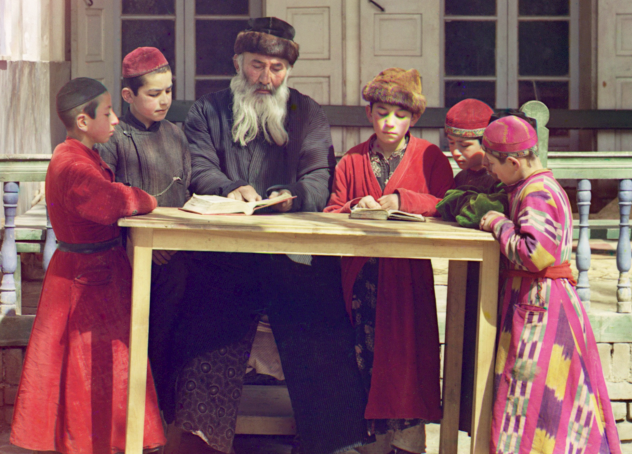
To the Western world, the Central Asian states between Russia and Afghanistan are largely unknown. What is known is that they were part of the USSR, and that the Silk Route to China traveled through the area. It is thus unlikely that the world has heard of the story of the Bukharan Jews, a community that is nearly 2,500 years old.
When the Babylonians destroyed Jerusalem in the seventh century B.C., the conquerors relocated many of the Judeans to Babylon. Not all stayed in that city; some of the Jews wandered first to Persia, but then they traveled along the Silk Road, settling where it was convenient. Bukharans, living in present-day Uzbekistan, trace their lineage back to these Jews. Yet, their story may end in other lands, far away from Bukhara.
Following the collapse of the USSR, many emigrated for better economic opportunities. Although some left for Israel, the largest expatriate Bukharan Jewish community is in Queens, New York, where they have had had both success and conflict. Numbering around 35,000, the community has established many businesses, particularly restaurants, and has built many mansions in the area. Still, the community tries to preserve their Central Asian heritage despite influence from the surrounding American culture. Their biggest struggle may be with the predominant Ashkenazi, who some believe are prejudiced against them, as the Bukharan Jews’ dress, food, and social customs are alien to Orthodox ways.
7 Kochi Jews
India

For nearly 500 years, a color line divided the Kochi Jewish community in India. The Malabar or “blacks Jews” were effectively segregated from the later “white Jews,” called the Paradesi. Although the color line has been broken, other developments in recent years have led to a decrease in the community’s population as they continue to immigrate to Israel.
The original Jewish settlers were the Malabar, but when and how they arrived in India is still a mystery. Some of the descendants believe that their ancestors arrived when the Assyrians exiled the 10 tribes in the eighth century B.C. Others believe that the settlement began when Jews left Jerusalem following the Roman destruction of the Second Temple in A.D. 70. Still others believe that voyagers from the Yemeni Jewish community are their ancestors. Whatever their origin, they arrived prior to the Paradesi.
The Paradesi were exiled Sephardi, who fled the inquisitions of Portugal and Spain. While a few Sephardi intermarried with the Malabar, most looked askance at the differing styles and customs of the community and kept separate. When Portugal established a colony in the area, color tensions increased as the Portuguese felt more comfortable interacting with the Paradesi as mediators between them and the Hindu populace. As a result, despite being under different flags (Portuguese, Dutch, British, and independent Indian) over the centuries, the Paradesi were higher socially than the Malabar.
Discrimination against the Malabar largely ended in the 1950s. However, when the UN recognized Israel in 1948, many decided to pursue a better life in the new country. Further economic stagnation in India turned this trickle of emigration into a flood, so now travelers visit the few remaining Kochi Jews as a curious tourist attraction.
6 Igbo Jews
Nigeria
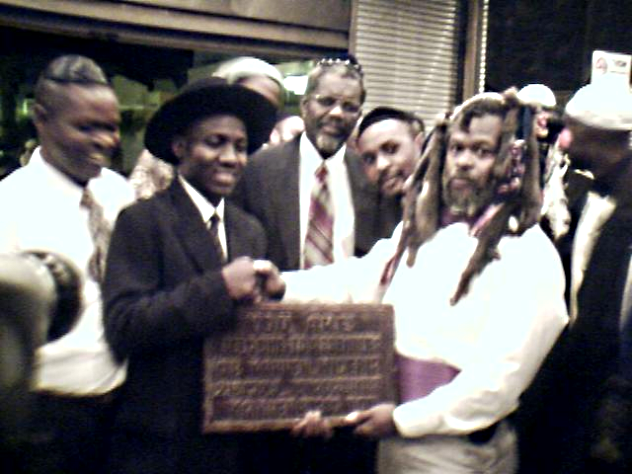
One of the most controversial groups that claims to be descended from the lost tribes of Israel is the Igbo tribe in Nigeria. Although the Assyrians removed the 10 tribes from Israel and resettled them, how could descendants end up in Nigeria before widespread transoceanic travel? Although there is still not conclusive evidence that the Igbo are genetically Jewish, there are theories about their journey if it’s true.
Most claimants say that their ancestors migrated from the Middle East and North Africa to sub-Saharan West Africa around 740 B.C., which is around the time of the Assyrian defeat of Israel. The Igbo believe that a ninth-century Jewish traveler named Eldad the Danite (who may have just been a very convincing storyteller) journeyed throughout Africa. He eventually contacted the Igbo, who had the Hebrew Scriptures except for Lamentations and Esther, which were written after the exile of Israel.
The Igbo show some signs of a Jewish connection in the past. Although there are no written records, the tribe observes dietary laws similar to kosher rules, separates females during menstruation, practices circumcision according to the Jewish custom, and celebrates holidays such as Passover. In modern times, because of contact with established Jewish communities, the Igbo have also begun adopting Jewish practices that developed after the Assyrian and Babylonian exiles. They hope that by maintaining their cultural traditions, they’ll withstand the pressure to either return to Christianity or bow to terroristic raids by Muslims, especially since Al-Qaeda and Boko Haram have increased their activities in the region.
5 Mountain Jews
Azerbaijan
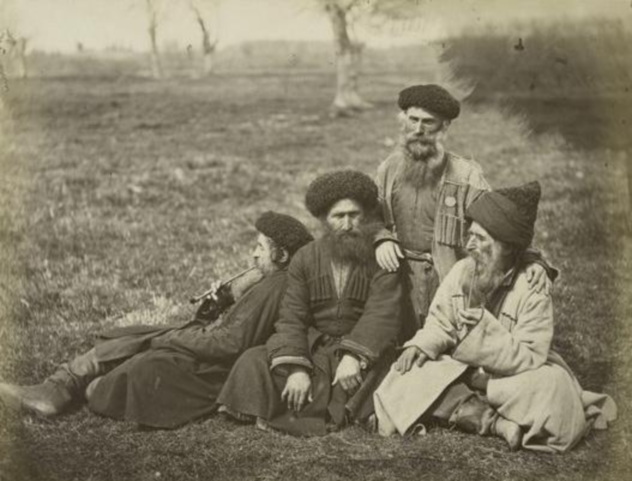
Not many Muslim countries are friendly toward Israel. Shiite Iran has been especially hostile since the 1979 revolution. There could be no greater contrast when one looks at the relationship between Azerbaijan, another Shiite nation, and Israel. In 2012, Iran protested and threatened Azerbaijan when they announced an official visit to Israel. President Aliyev said, “I know who my friends are and who my enemies are.” Israel and Azerbaijan are friends, or at least allies, as shown by their strong defense and trade relationship. This tolerance in a predominantly intolerant region goes back centuries to the country’s acceptance of the Mountain Jews.
During the relocation from Israel and Judah 2,500 years ago, groups from the tribes traveled to Persia. Some adopted Juhuri, which is a Farsi-based language with leftovers from Hebrew that is spoken to this day. Like some other groups of exiles, these Juhuri speakers moved on from Persia and eventually settled in the Caucasus Mountains, where the surrounding people called them “Mountain Jews.”
Because they live in a country that is more than 90 percent Muslim and was once under the firm hand of the officially atheistic USSR, the Judaism of the remaining few is muted. Often, the people may neglect details during the various celebrations such as Shabbat. To the Azerbaijani Jews, this doesn’t negate their sense of cultural identity. They believe in the spirit of Judaism; they still enjoy the food and customs brought by their ancestors, but they’ve developed their own unique culture that intertwines Jewish and Central Asian traditions.
4 Lemba
Zimbabwe, South Africa

In South Africa and Zimbabwe, a tribe refrains from eating pork, practices circumcision, and keeps one day a week holy, which contrasts with the surrounding tribes’ customs. These people—the Lemba—who have the same genetic phenotype as their neighbors, believe that they are descendants of Judeans that fled the destruction of the Babylonians. The Lemba believe that male ancestors journeyed south through Yemen to their present location, where they intermarried with the local population. Surprisingly, many of the Lemba don’t even claim Judaism as a religion; many are Christians, while others are Muslim.
The Lemba, however, believe that Judaism is their culture, which is why they are seeking scientific answers. Recent DNA testing may confirm their oral legend. In the 1990s, geneticists discovered the Cohen genetic signature, which often signifies Jewish ancestry. The same proportion of the signature that is found in major Jewish populations was also found in the Lemba men claiming descent from Buba, the legendary Judean leader who they claim journeyed to southern Africa.
One of the most distinguished aspects of Lemba culture is their tradition of the ngoma lungundu or “the drum that thunders.” Some researchers believe that the basis for this legend is the Ark of the Covenant; there is a 600-year-old artifact currently held in a Zimbabwean museum that they carried in the manner that the priests carried the Ark. According to the tribe, the original ark was lost in Yemen, while they created replicas for the battles that they fought over the centuries.
3 Kaifeng Jews
China
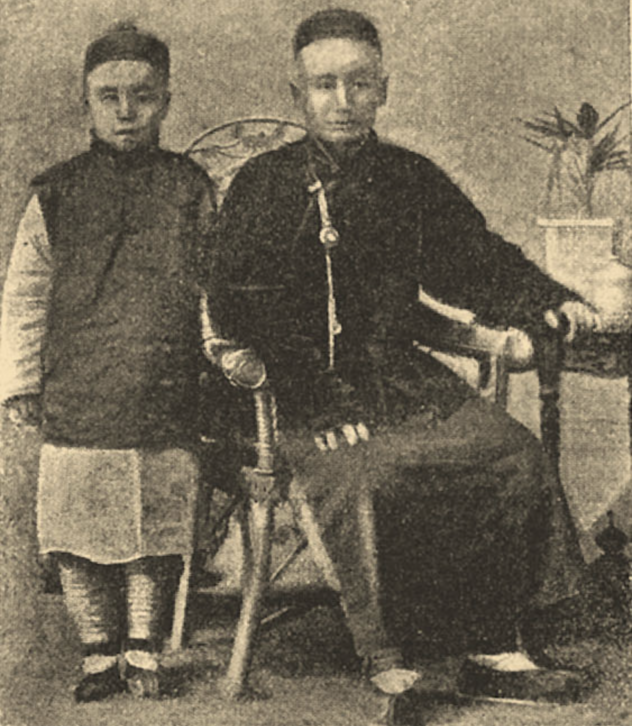
In 1605, Jesuit missionary Matteo Ricci received an interesting visitor in Beijing. An emissary from Kaifeng traveled to the city because he heard that Ricci was a coreligionist. Ricci was surprised as Catholicism had just entered East Asia a few decades earlier. When Ricci met the emissary, he made an important discovery which he soon reported to the Vatican: The emissary was a Chinese Jew.
Although the exact date of the Jews’ arrival in China is unknown, scholars recognize that they built the first synagogue in 1163. It is possible that Jewish merchants worked in China as early as the seventh century, although it is uncertain if they maintained a permanent presence. More likely, they first established a community after fleeing persecution that surged following the increase of Christian-Islamic warfare. In Kaifeng, these immigrants found a place of respite, where they enjoyed good relations with the Song dynasty emperors and their subjects. Known as the blue-hatted Hui, one of the emperors gave them seven Chinese family names as he struggled with pronouncing Hebrew.
Over the centuries, the Kaifeng Jews forgot many of their customs and lost knowledge of the Hebrew language. In the mid-19th century, when local missionaries purchased a Hebrew Torah for the community, no Kaifeng Jew could read it. Since the synagogue had long been in disrepair, and because they had no trained rabbi, the community largely neglected religious services. Still, the memory of their cultural past flickered as they rejected pork products and made unleavened bread.
Currently, the small Kaifeng Jewish community has made efforts to reconnect with their roots. Some of the younger members have traveled to Israel and the United States to study Hebrew and to convert formally to Judaism, as the Kaifeng don’t meet the matrilineal requirements of Orthodox Judaism. The remaining members seek to learn about their lost identity by other means, whether it is through the media or from Jewish travelers that have come to meet their lost brethren, as China doesn’t recognize Judaism as an approved faith.
2 Yemeni Jews
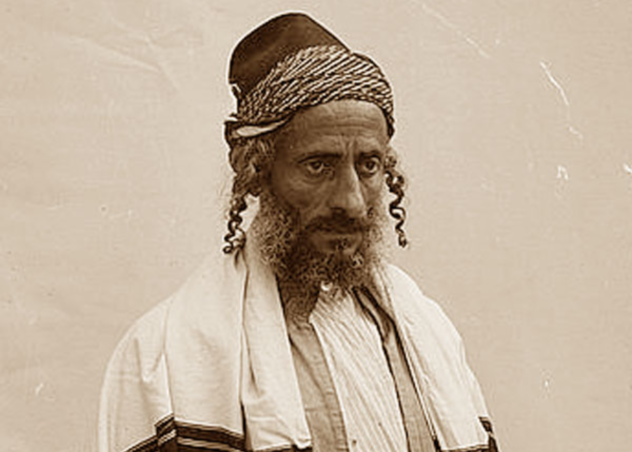
It is possible that civil strife and increased hostility toward the minority community will drive the last few Jews out of Yemen. Between 1949 and 1951, the US and the UK airlifted 49,000 Jews to safety in Israel during Operation Magic Carpet. In recent years, the US State Department has run what will likely be the final operation to save the dwindling community, by resettling the harassed people either in the US or in Israel. Before this chaos, the Yemeni Jewish community was one of the oldest and most vibrant, being descendants of merchants sent by King Solomon to trade for materials to adorn the temple. Today, there are less than 100 members.
Before the rise of Islam, Yemen was once the land of a thriving Jewish kingdom. For 150 years, Jewish Kings ruled Himyar. According to scholars, Himyar’s rulers converted to Judaism around A.D. 380. These kings first settled the strife within Yemen before advancing northward across Arabia. These kings used Judaism to unify an often fractious and persistently tribal people.
In the sixth century, the Coptic Christian Axumites in Ethiopia had their eyes on Himyar, and they helped install a Christian on the throne, who was soon replaced in a coup by a Jewish man named Yusuf. Yusuf soon went on a mission of revenge by massacring Christians, before Axum invaded Himyar, defeated Yusuf, and made it officially Coptic. A century later, Islam began its military advancement. Some scholars believe that the example of the Himyar kings may have influenced Mohammed’s ambitions as he succeeded in uniting many of the fractious Arabian tribes under a single banner, while the Himyar kings had failed.
1 Beta Israel (AKA The Falashas)
Ethiopia
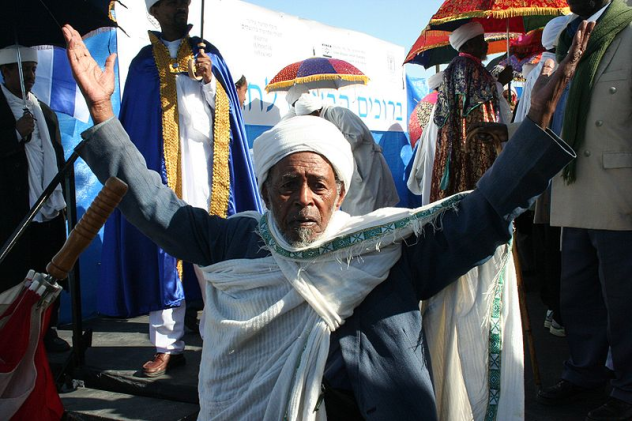
Although various groups had persecuted the Falasha community in Ethiopia throughout the centuries, the situation reached a boiling point in the 1970s, when the communist government overthrew Haile Selassie. Famine raged, and war with Somalia threatened the stability of the region. Many Falashas fled to Sudanese refugee camps. It wasn’t until the mid-1980s that the hostile government allowed them to leave the region. Covertly, Israel (with the help of the CIA, mercenaries, and the Sudanese security forces) evacuated some of the Falashas in 1985 using a plan code-named Operation Moses. The later Operations Joshua and Solomon evacuated even more of the beleaguered people. Now only a few thousand remain in Ethiopia and Sudan.
There are numerous theories as to their origin as a people. One tradition is that after the destruction of the first temple, they first traveled to Egypt, and after Rome conquered Egypt, they went further south into Ethiopia. Another belief is that the Falashas are the descendants of Menelik I, who was supposedly the son of King Solomon and the Queen of Sheba. The last theory is that they are the descendants of the tribe of Dan, who fled during the war that split Israel into the two-tribe kingdom of Judah and the 10-tribe kingdom of Israel. Beta Israel’s separation from the rest of the Jewish community occurred early as their religion centers on the Orit, which is the Torah in the native Gez language. Thus, the book is without the post-exilic writings of the rabbis. Whatever their origin, the fleeing Jews eventually intermarried with the eastern African population, forming a culture distinct from the surrounding Christian, Muslim, and pagan tribes.
Christopher Fried is a formalist poet and a freelance writer. Check him out at www.christopherfried.com.








